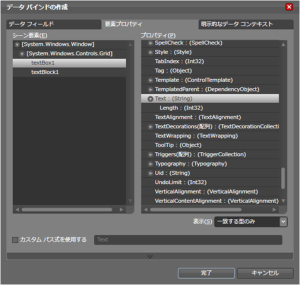private void Sample()
{
this.viewPort3D1.Name = "ZAM3DViewport3D";
viewPort3D1.ClipToBounds = true;
viewPort3D1.Width = 400;
viewPort3D1.Height = 300;
ResourceDictionary resourceDictionary = new ResourceDictionary();
////
MaterialGroup materialGroup = new MaterialGroup();
DiffuseMaterial diffuseMaterial = new DiffuseMaterial();
diffuseMaterial.Brush = new SolidColorBrush(Color.FromRgb(0xd3, 0xc8, 0xad));
materialGroup.Children.Add(diffuseMaterial);
SpecularMaterial specularMaterial = new SpecularMaterial();
specularMaterial.SpecularPower = 93f;
specularMaterial.Brush = new SolidColorBrush(Color.FromRgb(0x33, 0x33, 0x33));
materialGroup.Children.Add(specularMaterial);
resourceDictionary.Add("ER___Default_MaterialMR1", materialGroup);
////
Transform3DGroup transform3DGroup = new Transform3DGroup();
TranslateTransform3D translateTransform3D = new TranslateTransform3D(0f, 0f, 0f);
ScaleTransform3D scaleTransform3D = new ScaleTransform3D(1f, 1f, 1f);
AxisAngleRotation3D axisAngleRotation3D = new AxisAngleRotation3D(new Vector3D(0f, 1f, 0f), 0f);
RotateTransform3D rotateTransform3D = new RotateTransform3D();
rotateTransform3D.Rotation = axisAngleRotation3D;
TranslateTransform3D translateTransform3D2 = new TranslateTransform3D(0f, 0f, 0f);
transform3DGroup.Children.Add(translateTransform3D);
transform3DGroup.Children.Add(scaleTransform3D);
transform3DGroup.Children.Add(rotateTransform3D);
transform3DGroup.Children.Add(translateTransform3D2);
resourceDictionary.Add("SceneTR7", transform3DGroup);
////
Transform3DGroup transform3DGroupBox = new Transform3DGroup();
TranslateTransform3D translateTransform3DBox = new TranslateTransform3D(0f, 0f, 0f);
ScaleTransform3D scaleTransform3DBox = new ScaleTransform3D(1f, 1f, 1f);
AxisAngleRotation3D axisAngleRotation3DBox = new AxisAngleRotation3D(new Vector3D(0f, 1f, 0f), 0f);
RotateTransform3D rotateTransform3DBox = new RotateTransform3D();
rotateTransform3DBox.Rotation = axisAngleRotation3DBox;
TranslateTransform3D translateTransform3DBox2 = new TranslateTransform3D(0, 0, 0);
transform3DGroupBox.Children.Add(translateTransform3DBox);
transform3DGroupBox.Children.Add(scaleTransform3DBox);
transform3DGroupBox.Children.Add(rotateTransform3DBox);
transform3DGroupBox.Children.Add(translateTransform3DBox2);
resourceDictionary.Add("BoxOR9TR8", transform3DGroupBox);
////
MeshGeometry3D meshGeometry3D = new MeshGeometry3D();
TypeConverter i32ColConv = TypeDescriptor.GetConverter(typeof(Int32Collection));
meshGeometry3D.TriangleIndices = (Int32Collection)i32ColConv.ConvertFromString("0,1,2 2,3,0 4,5,6 6,7,4 8,9,10 10,11,8 12,13,14 14,15,12 16,17,18 18,19,16 20,21,22 22,23,20");
TypeConverter vector3DColConv = TypeDescriptor.GetConverter(typeof(Vector3DCollection));
meshGeometry3D.Normals = (Vector3DCollection)vector3DColConv.ConvertFromString("0,0,-1 0,0,-1 0,0,-1 0,0,-1 0,0,1 0,0,1 0,0,1 0,0,1 0,-1,0 0,-1,0 0,-1,0 0,-1,0 1,0,0 1,0,0 1,0,0 1,0,0 0,1,0 0,1,0 0,1,0 0,1,0 -1,0,0 -1,0,0 -1,0,0 -1,0,0 ");
TypeConverter point3DColConv = TypeDescriptor.GetConverter(typeof(Point3DCollection));
meshGeometry3D.Positions = (Point3DCollection)point3DColConv.ConvertFromString("-0.5,-0.5,-0.5 -0.5,0.5,-0.5 0.5,0.5,-0.5 0.5,-0.5,-0.5 -0.5,-0.5,0.5 0.5,-0.5,0.5 0.5,0.5,0.5 -0.5,0.5,0.5 -0.5,-0.5,-0.5 0.5,-0.5,-0.5 0.5,-0.5,0.5 -0.5,-0.5,0.5 0.5,-0.5,-0.5 0.5,0.5,-0.5 0.5,0.5,0.5 0.5,-0.5,0.5 0.5,0.5,-0.5 -0.5,0.5,-0.5 -0.5,0.5,0.5 0.5,0.5,0.5 -0.5,0.5,-0.5 -0.5,-0.5,-0.5 -0.5,-0.5,0.5 -0.5,0.5,0.5 ");
resourceDictionary.Add("BoxOR9GR10", meshGeometry3D);
////
PerspectiveCamera camera = new PerspectiveCamera();
camera.FarPlaneDistance = 10f;
camera.LookDirection = new Vector3D(2.05609, -1.21509, -2.52021);
camera.UpDirection = new Vector3D(0f, 1f, 0f);
camera.NearPlaneDistance = 2f;
camera.Position = new Point3D(-2.05609, 1.21509, 2.52021);
camera.FieldOfView = 39f;
viewPort3D1.Camera = camera;
////
ModelVisual3D modelVisual3D = new ModelVisual3D();
Model3DGroup model3DGroup = new Model3DGroup();
model3DGroup.Transform = (Transform3D)resourceDictionary["SceneTR7"];
//////
AmbientLight ambientLight = new AmbientLight(Color.FromRgb(0x33, 0x33, 0x33));
model3DGroup.Children.Add(ambientLight);
DirectionalLight directionalLight1 = new DirectionalLight(Colors.White, new Vector3D(-0.6f, -0.5f, -0.6f));
model3DGroup.Children.Add(directionalLight1);
DirectionalLight directionalLight2 = new DirectionalLight(Colors.White, new Vector3D(0.6f, -0.5f, -0.6f));
model3DGroup.Children.Add(directionalLight2);
////
MeshGeometry3D meshGeometry3D2 = (MeshGeometry3D)resourceDictionary["BoxOR9GR10"];
GeometryModel3D geometryModel3D = new GeometryModel3D();
geometryModel3D.Geometry = meshGeometry3D2;
geometryModel3D.Material = resourceDictionary["ER___Default_MaterialMR1"] as Material;
geometryModel3D.BackMaterial = (Material)resourceDictionary["ER___Default_MaterialMR1"];
model3DGroup.Children.Add(geometryModel3D);
modelVisual3D.Content = model3DGroup;
this.viewPort3D1.Children.Add(modelVisual3D);
}


